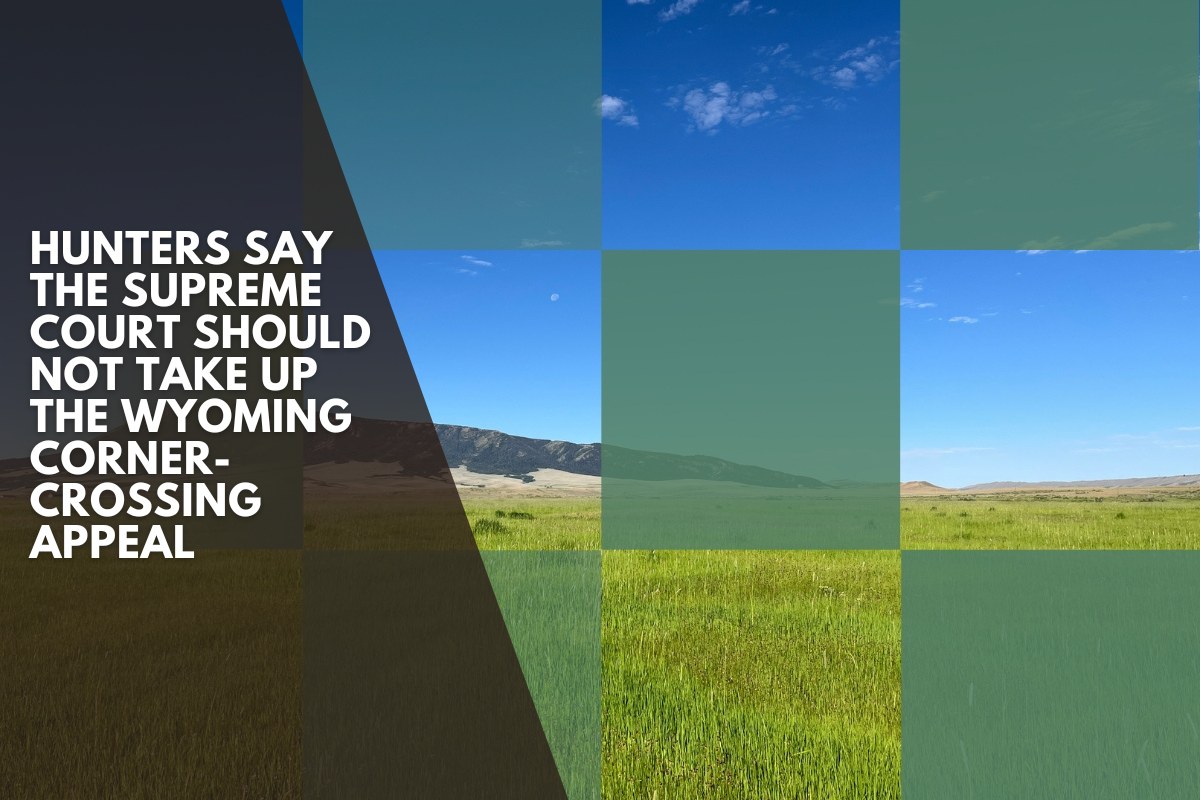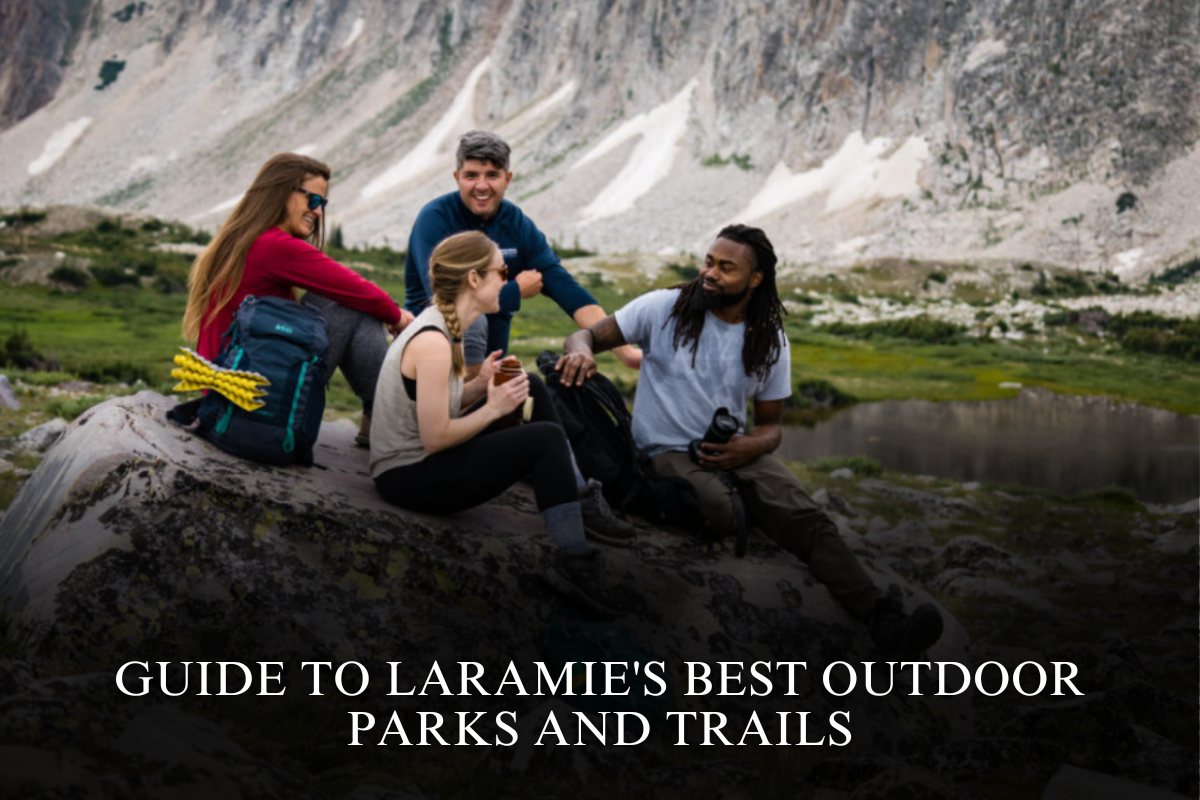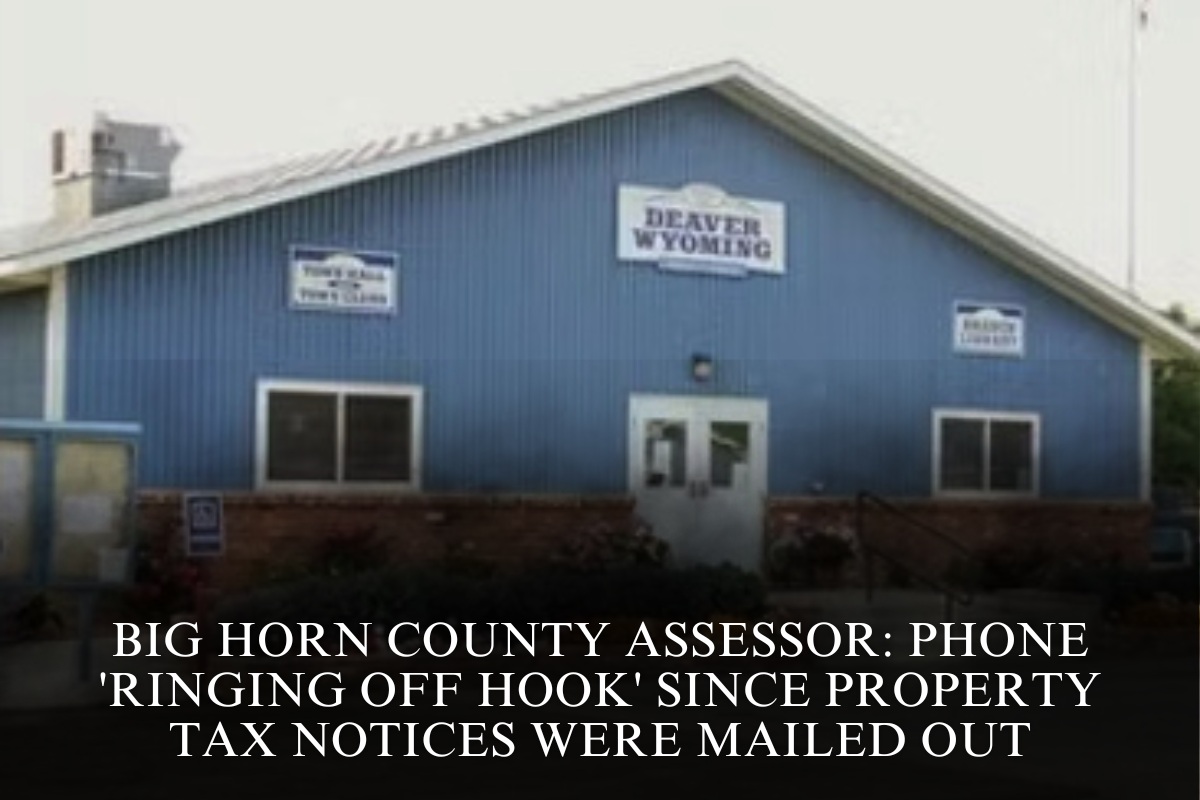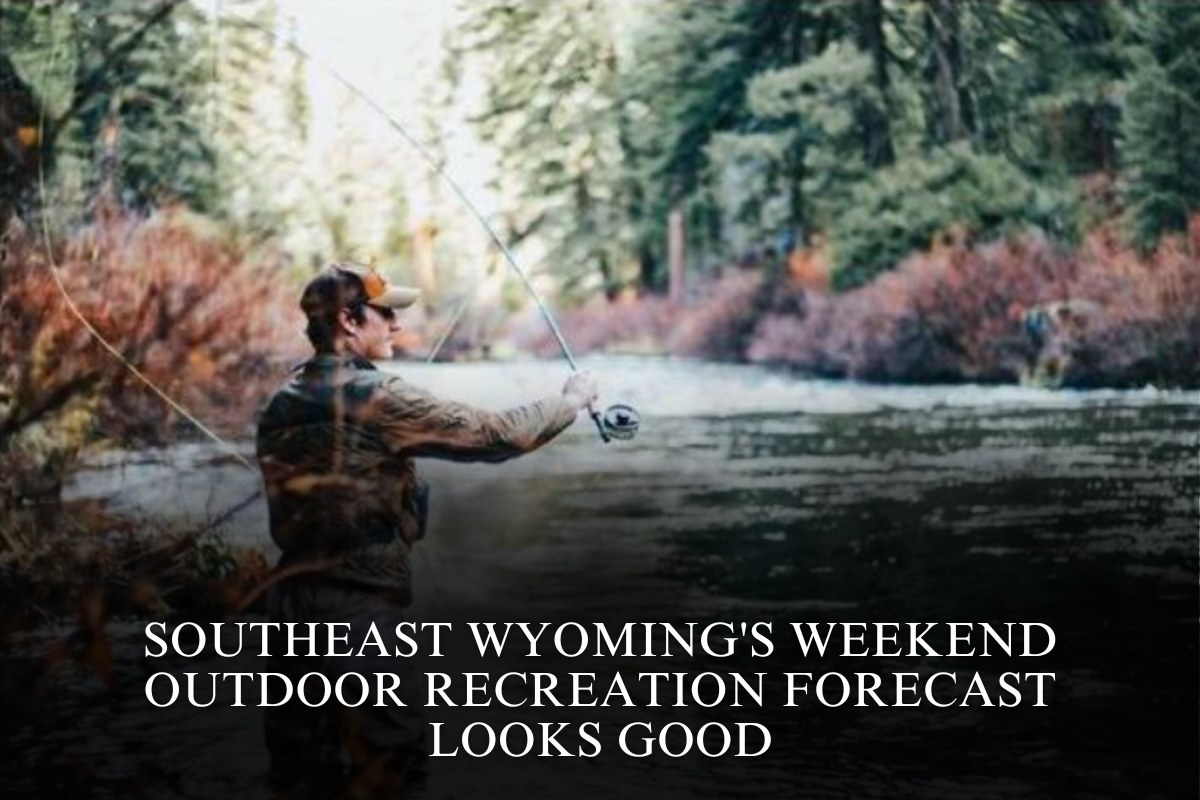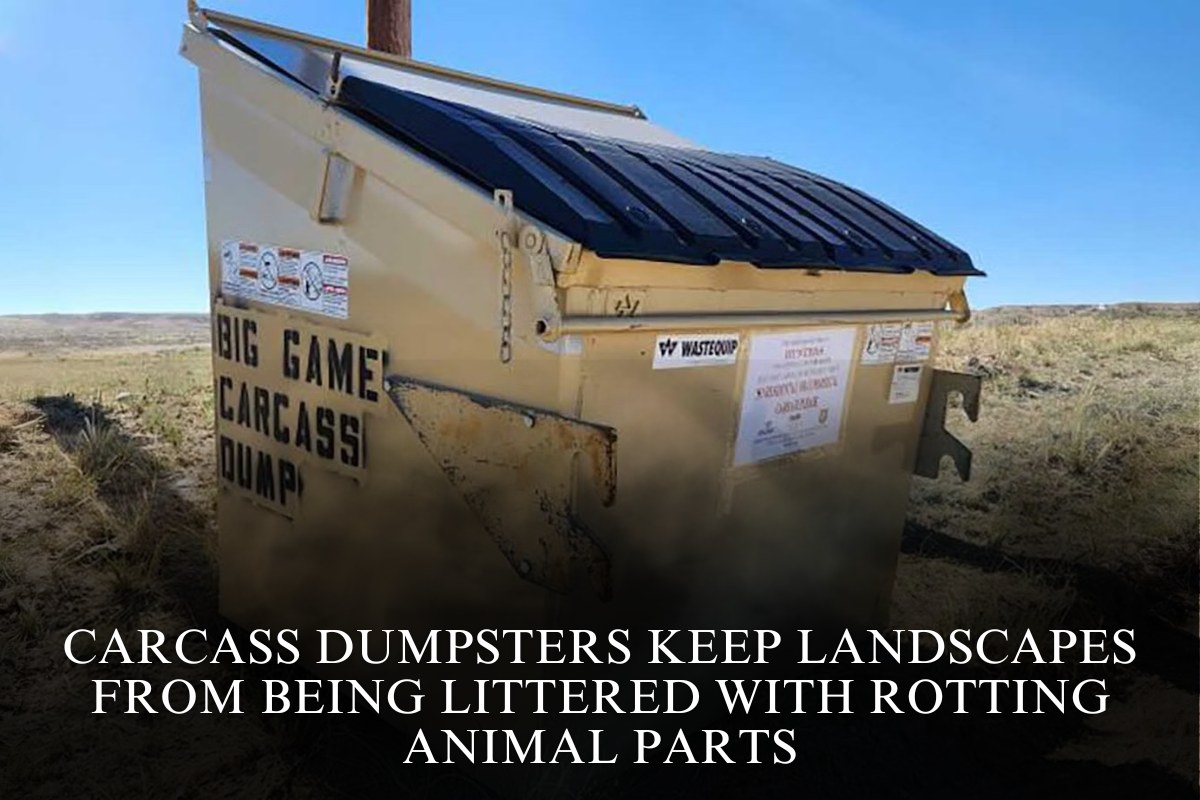The Elk Mountain Ranch owner’s failed trespass lawsuit against four men who corner crossed to hunt on public land in Carbon County should not be reviewed by the United States Supreme Court, according to a 39-page document filed Wednesday by the hunters’ attorneys.
Ranch owner Fred Eshelman’s petition to the Supreme Court to hear the case is “procedurally deficient and doctrinally unfounded,” according to the new filing. The hunters argue that Eshelman’s claim that corner crossing is an unconstitutional taking of private property was not fully and fairly presented to lower courts, making it moot.
Eshelman claims, among other things, that corner crossings constitute an unconstitutional taking of private property without compensation. However, the hunters claim that he and his landowning company, Iron Bar Holdings, raised that argument late in the legal process, almost casually.
According to the hunters’ brief, before the Supreme Court could consider Eshelman’s takings argument, the ranch owner had to fully argue the issue in lower courts, exhausting all other remedies.
“This Court should not take this case to explore Iron Bar’s procedurally deficient and doctrinally unfounded takings theory,” said attorneys Ryan Semerad and Lee Mickus.
“Been here before”
Eshelman’s Elk Mountain Ranch spans approximately 20,000 acres of a wildlife-rich peak that rises to 11,156 feet. The North Carolina landowner and pharmaceutical magnate is a hunter whose property borders 6,000 acres or more of public land owned by all Americans and managed by the Bureau of Land Management.
Property ownership in southern Wyoming is organized in a checkerboard pattern of public and private square-mile sections, a remnant of the mid-nineteenth-century railroad building and land-grant era.
“Iron Bar complains that this narrow decision effectively legalized trespassing across the country, destroying billions of dollars in property value. The hyperbole is misplaced.”
Ryan Semerad and Lee Mickus
“Many public-land squares on these checkerboards are only accessible by ‘corner crossing,'” the hunters’ lawyers explain. It’s accomplished by “stepping from one public-land square to the next one across the public-private corner without touching the private-land squares.”
Corner crossing requires passing through the airspace above private property. Eshelman claims that corner crossing is a trespass under the common-law “ad coelum” dictum, which holds that a landowner owns the airspace above his or her property.
According to the onX digital mapping company, 8.3 million acres of public land in the West would be inaccessible if corner crossings were found to be illegal trespass.
That is what Missouri hunters Bradly Cape, John Slowensky, and Phillip Yeomans did in 2020, and they will do it again in 2021 with Zachary Smith. The Carbon County attorney charged them with trespass, and a jury found them not guilty of the misdemeanor in 2022.
That year, Eshelman filed a civil lawsuit against the four, attempting to prevent them and others from crossing a corner to access public land on Elk Mountain. A federal judge in Wyoming ruled that Eshelman could not prevent the hunters from accessing landlocked public land in Wyoming’s checkerboard region, and when Eshelman appealed, the 10th Circuit Court of Appeals agreed.
The Wyoming chapter of Backcountry Hunters and Anglers has backed the hunters, stating that they needed to have their case heard and financial assistance to balance Eshelman’s assets and resources.
Eshelman’s petition to the Supreme Court claimed that the 10th Circuit decision against him “steamrolls state law, takes easements, and revolutionizes property law, affecting up to 150 million acres of private land.”
Disarming Eshelman’s takings arguments was one of several points the hunters made in their response, including that “this [Supreme] court has been here before” and ruled in favor of public access to public land. According to the hunters, the 10th Circuit Court of Appeals correctly applied the text of the 1885 Unlawful Inclosures Act as well as the precedent established by previous cases involving that law.
Congress passed the 1885 act during checkerboard scuffles to prohibit blocking public access to public land, including by using fences, other physical barriers and even threats and intimidation.
The appeals court’s decision is narrow, doesn’t break new ground and is not in conflict with decisions in other appeals court circuits, the hunters’ response states. Those are all reasons to let the lower court ruling stand, they say.
Eshelman also failed to fully argue in lower courts that the 1885 Unlawful Inclosures Act does not automatically supersede Wyoming’s trespass laws. “Ordinarily, this [Supreme] Court does not decide questions not raised or resolved in the lower court,” the hunters state.
Bye bye Leo Sheep
Eshelman and his landowning company Iron Bar Holdings have argued that courts decided another Carbon County checkerboard case — known as Leo Sheep — in favor of blocking public access to public land across checkboard corners. In that instance, the BLM sought to build a road across a common corner to provide public access to a reservoir.
Courts ruled against the BLM. Eshelman’s attorneys use this decision to argue that the federal government never reserved an easement for the public to corner cross.
The hunters disagree.
“As the Tenth Circuit explained, Leo Sheep doesn’t apply to Iron Bar’s claims,” according to the hunters. According to Wednesday’s filing, the Supreme Court previously stated that the 1885 act, on which the hunters rely, “played no role” in Leo Sheep.
“But Iron Bar raises a categorically different question,” says the hunter group, “whether checkerboard landowners can affirmatively extinguish all access to neighboring checkerboarded public land.” The Supreme Court denied a petition to hear a case that “invoked Leo Sheep in the same flawed way,” the hunters claim.
The hunters’ response expands on a few other points, highlighting the consequences of discovering that the corner crossing is an illegal trespass.
“The UIA supplants conflicting state law since a different rule would place the public domain of the United States completely at the mercy of state legislation,” according to the complaint. In other words, the hunters claim that by preventing the public from accessing public property, Eshelman can enjoy the land and its bounty for himself.
Semerad and Mickus point out that the 1885 UIA was in effect long before Eshelman ever set eyes on Elk Mountain.
“Iron Bar bought checkerboarded property in 2005,” the attorneys wrote. “[Eshelman’s] rights have always been subject to the limits imposed by the UIA.”
Although the 10th Circuit decision is focused, the hunters believe Eshelman exaggerates its impact.
“Iron Bar complains that this narrow decision effectively legalized trespassing across the country, destroying billions of dollars in property value,” according to the lawsuit. “The hyperbole is misplaced.”
“The [appeals] court did not immunize a trespasser who marches straight down the middle of private property,” as Eshelman claims, the hunters argue. “Rather, the court held only that if access to public lands is otherwise restricted, a checkerboard landowner cannot sue a corner crosser for trespassing so long as they did not physically touch [private] land.”
